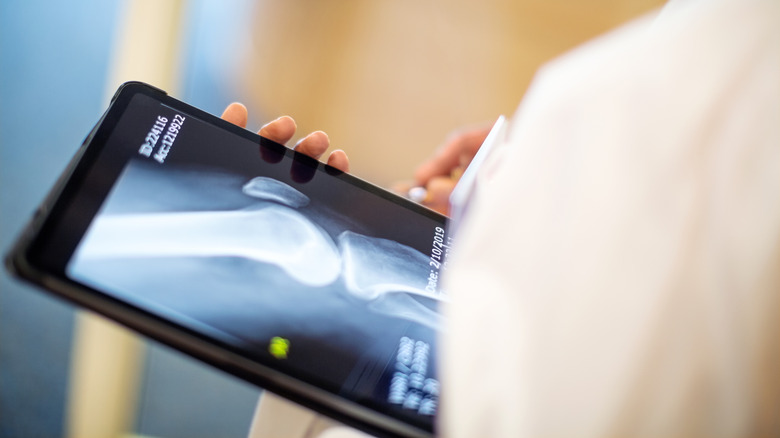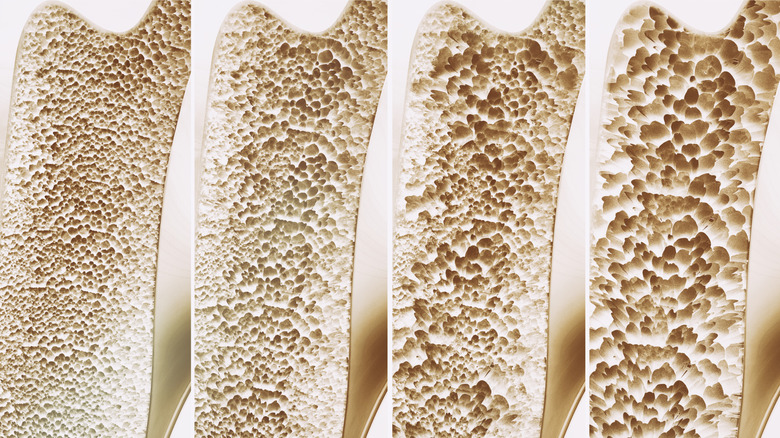New Scientific Breakthrough Could Strengthen Bones To Reverse Osteoporosis
In the United States alone, over 50 million people deal with the complications of osteoporosis. While it's more common in people over 50, you can show symptoms earlier, especially since the human body reaches peak bone mass by age 30. The disease causes bones to weaken or become brittle, leading to serious injuries even from minor complications. Putting any amount of strain on the bones and body structure, like coughing, falling, or bending over, can cause a severe bone break in those with the disease. We know a lot about it — it's caused by the growth of new bone not keeping up with the loss of old bone, and can be characterized as a deficiency — though getting enough calcium and vitamin D when younger can help prevent it. Treatment is a little more tricky, though.
A 2025 study published in Signal Transduction and Targeted Therapy could prove it's possible to reverse the disease and create a real treatment. Spearheaded by researchers from University of Leipzig in Germany and Shandong University in China, the scientists identified a natural bone-strengthening mechanism in the human body that can be targeted for said treatment. The gene, GPR133 or ADGRD1, influences bone density in the body and adjusts the bone-building process through cells called osteoblasts.
That said, currently available osteoporosis treatments slow the condition but do not halt or reverse the process. Moreover, they come with a lot of baggage — risky side effects like an increased risk of infection or disease. As the body builds a tolerance, they also become less effective over time. In fact, some risky NSAIDs have been recalled by retailers like Walmart. Ultimately, at the moment, preventing osteoporosis is the best we can do; doing so is even a reason the U.S. military's body fat rule has changed. Focusing on fitness over a low body fat percentage can help prevent future issues, weakened bones being one.
What do we know about the research?
This is not the first time the GPR133 gene has been linked to bone density and development, and in the 2025 study, the researchers began by focusing on the proteins that gene encoded. They used a chemical called AP503 — which was "only recently identified via a computer-assisted screen as a stimulator of GPR133," according to biochemist and University of Leipzig researcher Ines Liebscher — to test the bone strengthening and weakening process in mice. In short, they used that chemical to activate the gene, or leave it dormant when absent, which directly influenced how the mice grew. When the chemical activated the gene, they grew up with strong, healthy bones. When the chemical was absent, the mice had weak bones.
The experiments show that the chemical AP503 can act as a sort of button to enable or disable growth, encouraging the osteoblasts in the bone to work harder. Interestingly, the research team was also able to show that when working together with regular exercise in the subject, the two methods can strengthen bones even further. If developed into future treatments, scientists believe they could be used to strengthen bones that are already healthy, and rebuild weakened bones. Most importantly, they should be effective at any age — even women going through menopause changes. In fact, weakening bones and the general deterioration of bones and cartilage is a big reason why you shrink as you get older, so it's important that any treatments would be usable later in life. Overall, this some pretty big news. But, of course, potential treatments are not even close to human clinical trials, so it could be a long while yet before those treatments make a real difference.

